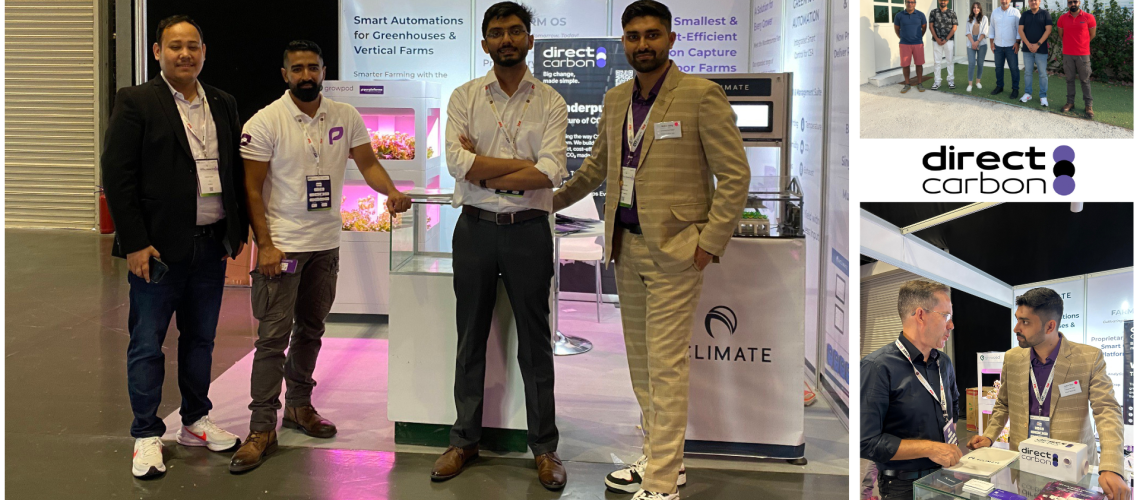The Gulf region is at a critical juncture when it comes to food security. With limited arable land, water scarcity, and heavy reliance on imports, governments across the region are actively driving investments into controlled environment agriculture (CEA) and technology-driven farming.
At Direct Carbon, we had the opportunity to exhibit at the GVF Show in Dubai on 10–11 September, followed by visits to Emirates Hydroponic Farms and Emirates Bustanica—two pioneers in the UAE’s agricultural landscape. These engagements offered invaluable insights into how the Gulf is shaping the future of food production.
Key Learnings and Takeaways
- Food Security as a Strategic Priority
Food security is not only an agricultural goal in the Gulf—it’s a national security issue. The emphasis on food security has grown stronger since the COVID-19 pandemic, when supply chain disruptions caused a severe food crisis and prices surged. Today, governments are backing ambitious initiatives to strengthen local production capacity, supported by strong public–private partnerships.
- Controlled Environment Agriculture is Scaling
CEA facilities, such as vertical farms and high-tech greenhouses, are moving from pilot scale to commercial adoption. Our visit to Emirates Bustanica—one of the world’s largest vertical farms—showcased what it truly means to operate vertical farming at scale: producing fresh, high-quality food at an affordable price point for consumers.
- Sustainability is Non-Negotiable
While food production is scaling up, there is strong emphasis on reducing reliance on fossil-based resources, improving water efficiency, and adopting circular approaches to farming. Sustainability is now a baseline requirement for innovation in agriculture across the region.
- The Role of Collaboration
The Gulf ecosystem is highly collaborative. Consultants, technology providers, and growers are working hand-in-hand to deliver solutions that are tailored to regional challenges like high energy demand, extreme climate, and resource constraints.
How Direct Carbon Can Contribute
Direct Carbon’s mission is to help indoor growers decarbonize their operations while enabling cost-efficient CO₂ enrichment. Our small-scale, modular Wunderpumpe systems capture CO₂ directly from ambient air—replacing fossil-derived CO₂ sources.
Here’s how our technology can support the Gulf’s food security journey:
- Stable & Reliable CO₂ Supply: Indoor growers no longer need to rely on inconsistent deliveries of liquid CO₂.
- Cost-Efficient Operations: Scalable systems (from 2 kg/day to 200 kg/day) allow farms of any size to integrate DAC at the right scale.
- Sustainable Growth: By switching from fossil CO₂ to air-captured CO₂, farms can significantly reduce their carbon footprint.
- Circular Farming Model: Our approach supports the Gulf’s push towards closed-loop, resource-efficient systems.
- Alignment with UAE Vision 2030: Direct Carbon’s technology empowers growers to adopt practices that align with the UAE’s Vision 2030 goals of sustainability, innovation, and food security.
Looking Ahead
The Gulf region is poised to become a global leader in sustainable food production. With strong government support, rapid adoption of CEA, and openness to innovation, the foundation is already in place.
At Direct Carbon, we are excited to contribute to this transformation—helping growers in the region build circular, climate-smart farms that ensure food security for generations to come.
